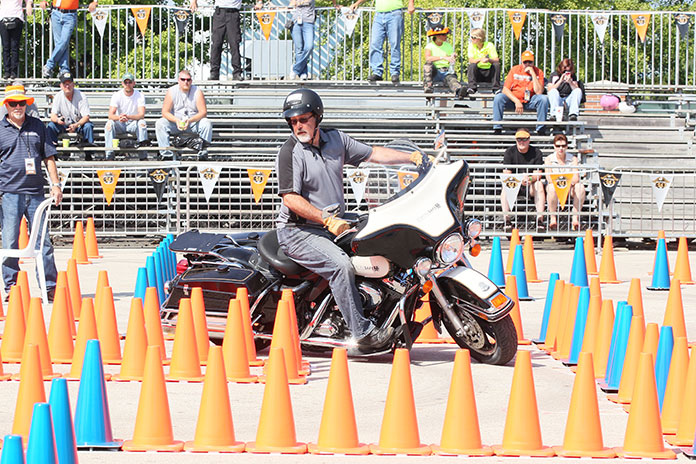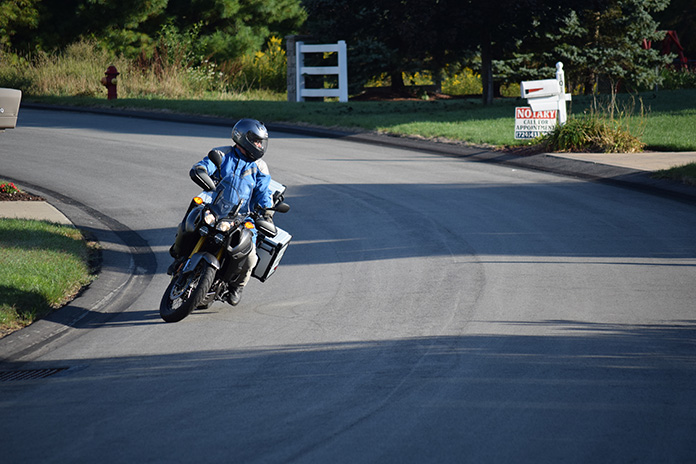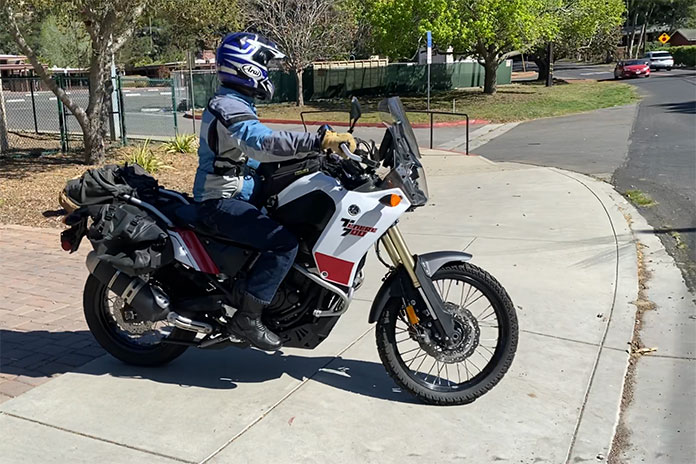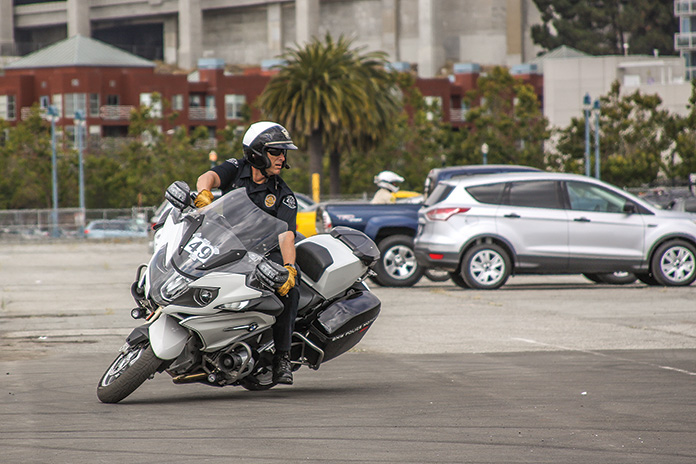Rear brakes aren’t a hot topic in today’s motoverse, nor are they necessarily among the most sought-after motorcycle tips. In fact, they’re kind of boring when the front binders on modern bikes provide so much stopping power, often with a single finger on the lever, but they’re still important.
According to the Motorcycle Safety Foundation, front brakes provide approximately 70% of a motorcycle’s maximal stopping power, leaving around 30% to the single rear brake. But many factors affect this ratio, such as speed, tire grip, road surface, road gradient, and type of motorcycle. Cruisers and touring bikes with long wheelbases benefit from rear braking to a greater degree than short-wheelbase motorcycles like sportbikes.
Hard braking at the front can lighten the rear end so much that it can be hard to take advantage of whatever percentage of braking is available back there. That’s a lesson I hadn’t learned yet when my ’83 Suzuki GS750ES, which had some serious stoppers, was new.
When used correctly, the rear brake improves control and stopping distance and also helps negotiate U-turns quickly and safely.
See all of Rider’s Motorcycle Tips & Tricks here.
Settling Down
My enlightenment came later with my ’87 Kawasaki KLR650, a venerable dual-sport notable for its large gas tank and weak single-disc stoppers at both ends. Having to use both binders to effect a short stop was a (not quite) crash course in rear brake use. Only then did I realize that doing so also attenuated dive and recoil from the KLR’s long-travel front suspension, keeping the bike closer to level throughout the stop.
This “Aha!” moment was a breakthrough in both stopping and overall control. Riding my Honda VFR750F at CLASS, Reg Pridmore’s track-based safety course, only reinforced that lesson. I wasn’t the fastest or the smoothest student rider, but when it came to the braking exercise – which required using both brakes – 19 years aboard KLRs had me stopping like a pro.

To prove the value of the rear brake to yourself, practice emergency stops (full braking power but without locking either wheel or engaging the ABS) with only the front brake, and then with both. When both brakes are applied, the bike should squat, pitching less at the front. The longer your front suspension travel, the bigger difference it makes. (On Telelever-equipped BMWs and other motorcycles with suspension systems that minimize front-end dive, the change in chassis pitch will be less noticeable.) The same technique but with a lighter touch on both brakes will give you more secure stops on loose or slippery surfaces.
Turn It Around
We’ve all missed a turnoff, forcing us to make a U-turn to get back on course. Performing one without putting a foot down – or worse, having to stop, back up, and take another stab at it – is a skill we should all master. I learned better technique doing test bike photoshoots for Rider, which require numerous U-turns, often on narrow roads, to get the right shot.

The key is to apply light pressure to the rear brake through the turn. The benefits are two-fold: shortening your bike’s turning radius and damping any unintended throttle inputs.
Practice in a parking lot, gradually reducing the number of parking spaces it takes to turn around. Just remember that it’s a light touch on the rear stopper; too much and you risk a fall. Keep your eyes up and look where you want to go, and keep the clutch in the friction zone for delicate power control. Also, keeping your feet on the pegs and weighting the outside peg yields the best results.
With practice, using the rear brake at slow speeds makes your U-turns steadier, faster, and safer.
Driveway Moments
You’re pulling out of a driveway, front wheel cocked, when a car appears from behind parked vehicles. While still on the driveway apron, you tap the front brake, which immediately pitches the bike in the direction of the turn. Quick thinking and a strong leg may keep it upright.

Next time, try using the rear brake as you reach the driveway apron. If you have to stop, use only the rear brake, which won’t make the bike pitch sideways since the rear wheel doesn’t affect steering or balance. The safest way to prove this to yourself is on a bicycle, where mistakes have milder consequences. Move up to a motorcycle when you’re confident with the technique.
By using these tips, the back brake may become your new best friend.









I ride Honda ADV 150 in Phuket ABS Front Drum Back sometimes back brakes in dry road not good control ABS Traction Control would be better like new Honda ADV 160 l will buy one in Cebu now February hehe
I have a 98 CBR 1100xx and she’s pretty heavy about 496 pounds , I’ve never dropped it , I’ve come close though, I’ve taken the classes and learned alot , and still learning, practice practice practice is always a good thing, you practice doing the things I’ve learned , and next thing you know it WILL happen to you out on the road, so practice practice practice everything
I was riding a Suzuki 650 Maxi Scooter, the rear brake was the [clutch] lever. Now I ride a Royal Enfield Interceptor 650. Getting used to the rear brake pedal is the biggest part of the transition.
Thanks for the article. You’re rite rear brakes aren’t discussed at all in what I read.
Thanks for the tips rider!
👍🏍️
You are absolutely correct. I always utilise the front and rear brake whenever needed to brake hard. More effective stopping and shorter distance. At low speed u-turn and manouvring thru traffic jam, only rear brake and clutch control are utilised, especially when need to make a counter steering turn. Easier to control and balance the bike.
Sorry, forgot to mention, I’m riding a Yr 2000 Honda Shadow VLX 600
As a kid the bikes I rode only had rear brakes so naturally I took this with me as I got older and started riding motorcycles. The first time I used front brakes was on a 10 speed and of course I did the dreaded front flip, ( no helmet back then) my first bike was a 72 iron head no front brakes, called it the death trap and drum brakes, you should never ride a bike with wet drum brakes. Thanks for the info on the back brakes, it will come it handy. 64 years old and riding since I was 12 never been down. Low drag high speed. See ya.
I always tap a bit on the rear then the front on my 1100 shadow. the rear tap is to test the road surfaces especially in rain where front slide out happens. This is my staple way of riding regardless of the bike i ride. Did the same on my 929 cbr.
Please explain in more detail how using the rear brake in u-turns shortens the turning radius
Light pressure on the rear brake stabilizes the chassis and allows a rider to execute a tighter U-turn at slow speed than without using the rear brake. This is one of the fundamental techniques of police-style motorcycle training.